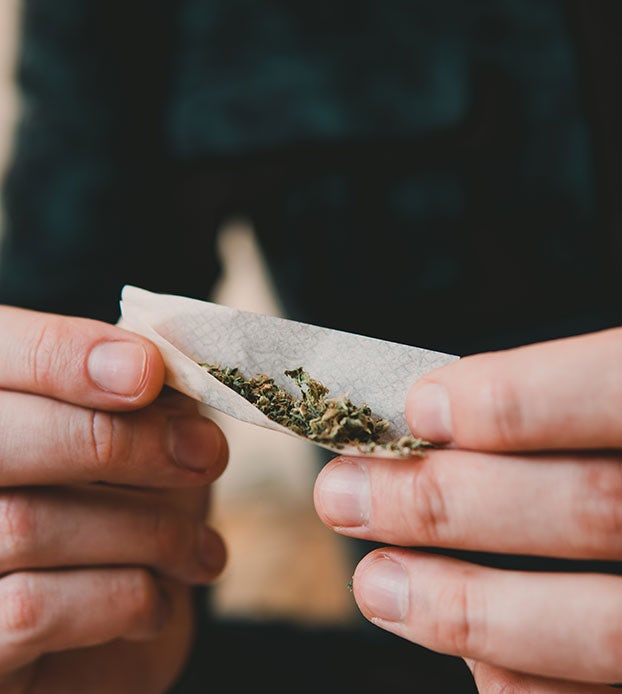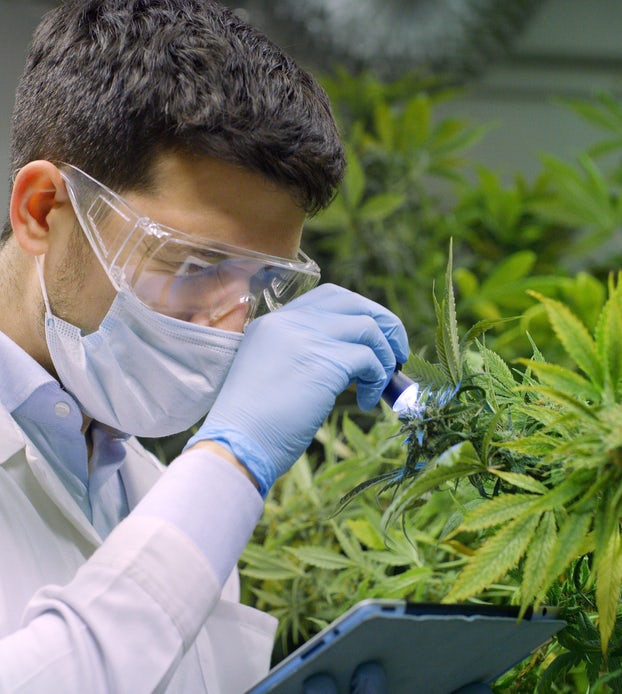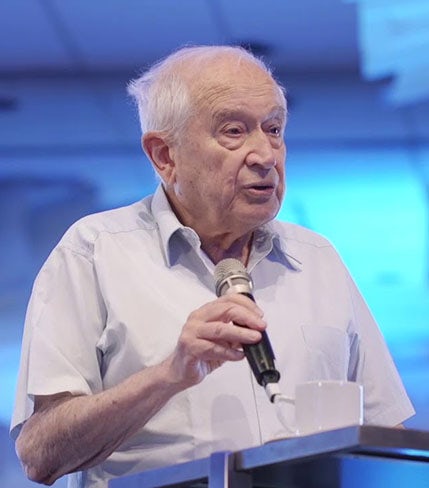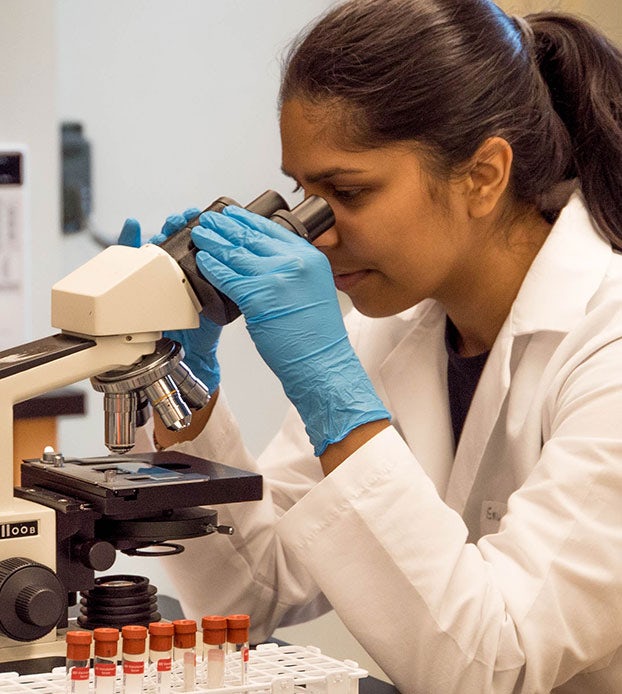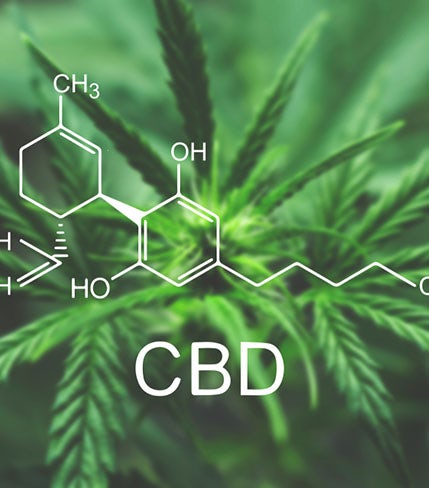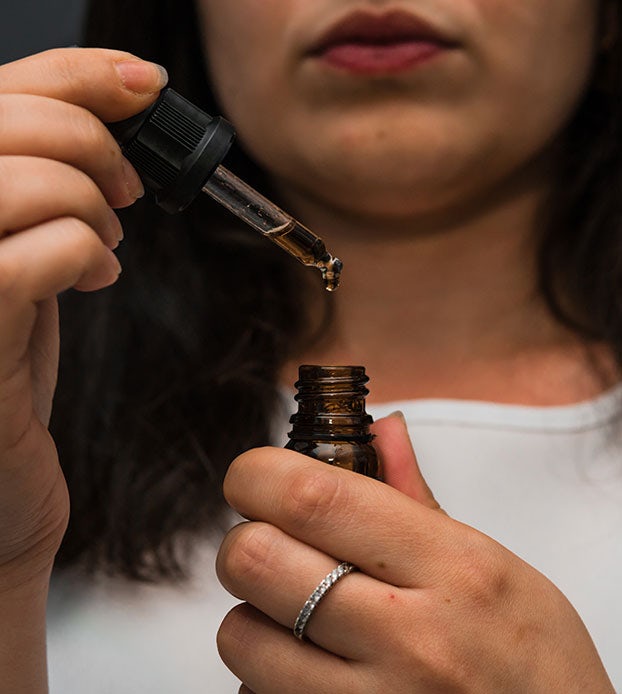There’s no doubt that the amount of information that is available about cannabis is at an all-time high – in 2020 alone, over 3,500 scientific articles were published on the topic. Research funding is also up, and all of this data influences how we see, think and hear about the plant and its effects. These claims influence things like how consumers purchase cannabis or how doctors consult with medical cannabis patients. But what if our understandings about cannabis, which seem to be grounded in a mountain of science, are wrong? What if most of it is not based on the level of scientific certainty that cannabis marketing teams and media outlets would have us believe? 1 2 3
The cannabis research problem
Despite the massive amount of research publications that come out year over year, many of these studies face one or more research design limitations. Some of the most common weaknesses are related to sample size, standardized materials and methods, or statistical significance.
Sample size (n) is the number of people participating in a study. The bigger the sample size, the more likely researchers are to be able to detect a difference between study groups, and the better the result will represent a larger population of people (called generalizability). When a sample size is very small, any anomalies or unusual variance among participants can have great effects on the final results.
Statistical significance (p) is a value associated with a study’s results that indicates the likelihood that the result is due to chance. The lower the p value, the greater the confidence that the result is not due to chance. However, a result can be statistically significant but not clinically significant–meaning that even though a study may detect a difference on paper, it may make no tangible difference in real-world application. Additionally, there are misleading practices of “p-hacking” where researchers can manipulate data through different statistical tests (thanks to modern computer programs) looking for statistically significant findings. 4
Standardized materials and methods are critical in a study to ensure that all participants receive the exact same formulation and dose of a product. This is difficult to do with a natural product like cannabis which exhibits varied chemistry from plant to plant and also throughout the plant itself. Because of this variability in the plant, and because of a lack of standard methods–like chemical analyses of cannabinoids or terpenes–has led to inconsistent scientific results. The largest issue with these variable study methods is that the results of studies done with different methods are often challenging to compare and contrast scientifically.
What makes a good research study, anyway?
Different types of research studies provide us with different types of information. Observational studies involve watching the subject and documenting outcomes like a reporter, whereas in interventional studies the researchers take a specific action and monitor the response. Preclinical studies involve exposing cells and animals to treatments to see if there are indications that the treatment could be worth evaluating in humans. Clinical studies are performed in people and can be controlled in various ways to understand how people respond to a treatment.
The following table outlines major different types of scientific research. The highest quality form of scientific research, in terms of whether the results provide predictive power (which is what science is all about), is the placebo controlled, double blind, randomized clinical trial. This is because these types of studies control the most variables to ensure that the results that come out of the trial are as reliable as possible.
The vast majority of cannabis research is generally either preclinical or observational in nature, due in large part to regulatory issues. Moreover much of the research done has focused on synthetic pharmaceutical grade cannabinoids developed by pharmaceutical companies. Comparatively there has not been as much controlled clinical research on herbal cannabis or cannabis extracts.
Types of Research
| Editorial | Opinions | These are editorials where a scientist writes an opinion about an observation or published study. |
| Meta-Analysis | A meta-analysis is a review of available published scientific papers on a certain topic where the results, methods and/or other components of a study are compiled and compared. Meta-analyses are common in Systematic Reviews | |
| Systematic Reviews / Review Papers | These are papers that are intended to provide an overview of scientific literature on a given subject within a certain time frame | |
| Clinical Observational | Case Reports/Case Studies | Case studies are documented records of something that happened outside of a controlled setting. |
| Case Control Study | Case Control Studies usually intend to compare two populations by reviewing attributes of the populations and then performing interviews or other measures to compare them. | |
| Cross-Sectional Study | Cross-sectional studies are observational studies that look at a population at a particular place in time. | |
| Prospective Observational Study | Prospective observational studies follow groups of people that share a certain trait and are compared to groups of people without that trait. | |
| Preclinical | In vitro | “In glass”; in vitro studies take place in test tubes, petri dishes, etc; results are very limited in their applicability outside the test tube |
| In vivo | “in life”; Interventional studies performed in living animals, usually rodents; results are limited in their applicability in humans | |
| Clinical Interventional | Placebo Controlled | Clinical studies with humans that compare effects from something compared to an “inactive” placebo; threatened by both administrator and participant bias |
| Randomized | Clinical studies that randomly determine which participants receive the active drug versus a placebo; participants know if they have the active drug or a placebo | |
| Blind, Randomized | Clinical studies that randomly sort participants without them knowing whether they have received the active drug or a placebo; trial administrators know which patients received a drug versus placebo | |
| Double Blind, Randomized | Clinical studies that randomly sort participants without them knowing whether they have received the active drug or a placebo in a manner where the trial administrators and facilitators also do not know which patients received a drug versus placebo. 5 6 |
The cannabis problem
Besides the typical research design limitations that we would expect to find in any research study, cannabis research faces unique problems. Cannabis is still very much illegal in many countries, which makes it very challenging for researchers to gain access to materials, money, and opportunities to conduct research in the first place. 7
Whenever a researcher wants to conduct research that involves other people or animals, it must be approved by an investigational review board (IRB). Many IRBs will not approve an interventional study with cannabis due to its legal status as well as the consciousness-altering effects of THC.
Additionally, even if a researcher does get approval to do a study, they then must find funding. In places where cannabis is still illegal, banking is not guaranteed for anyone that wants to touch the plant. Plus, cannabis research may affect unrelated funding for non-cannabis projects. Universities, for example, are often dependent on funding from government sources as well as philanthropic institutions, which may very well pull their funding if they learn that the school is engaged in activity that breaks the law – even if the school is located in a state, territory, or country where cannabis has been regulated.
Finally, even if all these hurdles are overcome, there is another problem facing researchers: the placebo effect. This is a phenomenon where patients report improvement in response to a therapy, even when that therapy is in an inert substance like a sugar pill or an injection of salt water. And when it comes to the unique mind altering characteristics of THC and herbal cannabis, how do you truly “blind” patients so that they do not know whether they have received a placebo or the drug?
It is also worth noting that the lack of controlled, blinded clinical cannabis research has been used repeatedly over time to justify prohibitive cannabis laws. But do we actually need more randomized double-blind clinical trials to justify legislative changes that would afford greater access to cannabis as a medicine, given the acknowledged safety profile of the herb and its constituents? Non-clinical research can help answer questions regarding safety and risk in very powerful ways. To put it simply, humans have been using herbal cannabis for a very long time and there is a mountain of observational data to support its generally recognized safety profile.
There’s another problem: science communication and literacy
The other glaring issue facing cannabis research lies in basic problems around how scientific research is communicated, as well as the general public’s ability to critically evaluate scientific information. Public scientific literacy is quite low in the United States, with only 28% of US adults qualifying as “scientifically literate” – an improvement from 10% since the 1990’s. Recent data suggest the US science knowledge is about the global average. Most American adults have a 7th grade reading level, yet most scientific papers are written to be read by someone with advanced college degrees. 8 9 10
On top of that, marketing pressures in news reporting confound the problem by incentivizing publishers to generate provocative and outrageous headlines that present an exaggerated account of a research study – both positive and negative findings.
The culmination of these two dynamics is a situation in which publishers, reporters, and science communicators are often delivering misinformation to an audience that is not scientifically literate enough to think critically about what they are reading in the first place.
Examples of Misleading Cannabis Research
#1: Cannabis and Schizophrenia
One of the claims that emerged throughout the 1970s through the 1990s was that cannabis caused schizophrenia. This was a slightly modified version of an old claim from the 1930s that cannabis made people go mad (aka “reefer madness”). These claims stem from research that has indeed demonstrated repeatedly that there are correlations between cannabis use and psychosis or schizophrenia.
It is true that large doses of THC – depending on individual tolerance – can cause intense experiences that could be defined as acute psychosis – or a break from reality. The endocannabinoid system is highly involved in our perception of reality, time, space and balance, and is highly localized to the same parts of the brain that are often out of balance in psychosis. In other words, there is an altered function in certain parts of a brain with schizophrenia, and those same regions are also highly intertwined with the ECS. But claims that cannabis directly causes schizophrenia are a misrepresentation of the current scientific evidence. The truth is more complicated. 11
In a 2009 review on the subject, researchers stated that, “…only a very small proportion of the general population exposed to cannabinoids develop a psychotic illness. It is likely that cannabis exposure is a ‘component cause’ that interacts with other factors to ‘cause’ schizophrenia or a psychotic disorder, but is neither necessary nor sufficient to do so alone.” 12
More recently a 2019 study confirmed this consensus, and found no causal relationship between marijauna and schizophrenia. To put it more simply – cannabis has the potential to cause a temporary psychotic break in most people if the dose of THC is large enough. But cannabis certainly does not cause schizophrenia in the average person, though it does carry risks for hastening onset or worsening symptoms for those at risk of schizophrenia. 13 14
#2: The elusive entourage effect
When the term “entourage effect” was first used in the late 1990s, it was meant to describe an observation where the body seemed to produce both endocannabinoids and “endocannabinoid-like” molecules simultaneously. These endocannabinoid-like molecules did not bind to CB1 or CB2 receptors but were still found to influence effects of the endocannabinoid 2-AG, acting as an “entourage” and protecting it from degradation. Later in the 2000s, researchers started using this term to refer to broad synergistic effects between components in the cannabis plant – a subtly different interpretation of the phrase. 15 16
Additionally, in the early 2000s, research was conducted to understand whether the concentration of major cannabinoids like THC and CBD could explain the differences in effects that patients were reporting from different types of cannabis. It turned out that there were not strong correlations between THC and CBD ratios and the types of effects users reported, so it was assumed that if it was not the cannabinoids driving these effects, it must be terpenes – since they are the other primary components of cannabis resin.
However, research has since largely failed to demonstrate how terpenes may be affecting the experiences of cannabis users. Much of the public discussion around the effects of terpenes and how they may contribute to the effects of cannabis are taken from preclinical research with isolated terpenoids, seemingly violating the very spirit of the “entourage effect” in the first place. 17 18
Yet despite all of this nuance and uncertainty around the entourage effect, every day more articles, blog posts, and social media posts are made about the purported ways users can leverage the entourage effect to treat various conditions. Products are formulated to somehow engage the entourage effect. But the truth is that the “entourage effect” is not well-defined scientifically, and most of the research around it has identified contradictory and confusing results. Cannabis polypharmacy (or synergistic effects) is real – but to say we understand it in any practical way is simply not true yet. While we may one day be able to quantify the “entourage effect,” the science today is not developed enough to do so. 19
#3: Edible absorption
There’s a lot of chatter in the cannabis industry around rapid-acting technology, and one manufacturer decided to put its money where its mouth is and perform a clinical study on their fast-acting edible products to Wana Brands’ rapid-acting and standard acting sour gummies. This study, funded by Stillwater Brands, a purveyor of THC and CBD infused edibles under the Ripple brand, found that the average circulating concentrations of THC seemed to be higher when participants took certain edibles than others. 20
This study was then used to make marketing materials that suggest Ripple products have been found superior to Wana products, claiming Ripple’s fast-acting gummies to have shown in clinical research to act up to 2.3 times faster than the Wana gummies. 21
However, this is not exactly what the study found and this example highlights several issues related to research study design as well as the incentives for companies to blur lines between science and marketing. The researchers did find that the Ripple product resulted in more absorption of THC into the blood at minute 20 and minute 30, a seemingly impressive result which stood up to statistical tests. But the statistical tests used were meant to detect a difference, not extrapolate “how many times faster” a product was absorbed. This is where marketing gets in the way of science communication, and how some shaky data can be framed as superiority.
A significant weakness of the study was sample size as there were only seven participants included in the final analysis of the study.The risk of a low sample size introduces a significant risk of error to the study, because any biasing or anomalies that occur will be exaggerated in the final result due to the limited data points.
Additionally, the averages of all the THC levels of all participants were used to make marketing materials even though there was only a statistically-significant difference between some of the Ripple products and some of the Wana products, but not all of them. For example no statistically significant difference between Ripple Quick stick products was found, yet the referenced marketing material claims 1.5x faster onset than Wana gummies and even faster onset than Wana Quick.
Although the study found statistically significant results, it does not then mean that consumers will notice a difference, or experience any clinically significant differences. Perhaps people will notice that one gummy seems to be stronger with a faster onset than another – but, maybe not. How does the difference between blood THC level and experience correlate? Although THC levels may be lower with some products, could there be other synergistic compounds at work driving effects? That is something we do not understand well at all. Just look at studies that seek to correlate THC blood levels to driving impairment to understand how complicated that kind of research can be. 22
Finally, this study, like many other cannabis studies, has not yet been replicated – a crucial step in the scientific method. It would be interesting to see this study performed again with a much larger sample size and using products from more manufacturers. Kudos to the Ripple team for carrying out real science in the cannabis industry, something far too rare and greatly needed. However claiming 2.3x faster onset based on the findings of this study is not being transparent with the customer or budtender. That is just simply not what the study found.
So how do we fix these cannabis research issues?
In order to improve the state of cannabis research, several distinct issues must be addressed. Legal barriers to research need to be removed so that it is easier for researchers to receive funding and do their work properly. Previous cannabis research needs to be replicated so that we can understand whether any assumptions we have been making about cannabis are sound. Studies need to not only be replicated, but also improved upon. Studies with greater sample sizes and better data collection are sorely needed.
Currently in the research space there is a lot of desire to push boundaries to make novel discoveries or contributions. However, there is a lot of value in going back to validate or disprove what has already been explored. For instance, there are easily accessible analytical methods that can allow researchers to analyze hundreds of compounds in cannabis products, when just a decade ago they may have only been able to analyze a couple dozen.
Science communicators and publishers must take greater responsibility for their role in driving public scientific literacy. We must read scientific information with a critical eye and resist the urge to exaggerate or hyperbolize research findings. We must be open to criticism and eager to change our minds as new data emerges and old data is criticized.
Through better regulations, study designs, and journalistic integrity, along with greater scientific literacy, perhaps one day we might wrap our heads around the great mysteries of the cannabis plant – together.
Sources
- https://norml.org/news/2020/12/23/record-number-of-scientific-papers-published-in-2020-about-cannabis/
- Ng, J.Y., Chang, N. A bibliometric analysis of the cannabis and cannabinoid research literature. J Cannabis Res 4, 25 (2022). https://doi.org/10.1186/s42238-022-00133-0
- Brown JD, Goodin AJ. Evidence in Context: High Risk of Bias in Medical Cannabis and Cannabinoid Clinical Trials Dictates the Need for Cautious Interpretation. Med Cannabis Cannabinoids. 2021;4(1):63-66. Published 2021 Feb 19. doi:10.1159/000514732
- Marín-Franch I. Publication bias and the chase for statistical significance. J Optom. 2018;11(2):67-68. doi:10.1016/j.optom.2018.03.001
- https://www.clinicaltrials.gov/ct2/about-studies/learn
- InformedHealth.org [Internet]. Cologne, Germany: Institute for Quality and Efficiency in Health Care (IQWiG); 2006-. What types of studies are there? 2016 Jun 15 [Updated 2016 Sep 8]. Available from: https://www.ncbi.nlm.nih.gov/books/NBK390304/
- National Academies of Sciences, Engineering, and Medicine; Health and Medicine Division; Board on Population Health and Public Health Practice; Committee on the Health Effects of Marijuana: An Evidence Review and Research Agenda. The Health Effects of Cannabis and Cannabinoids: The Current State of Evidence and Recommendations for Research. Washington (DC): National Academies Press (US); 2017 Jan 12. 15, Challenges and Barriers in Conducting Cannabis Research. Available from: https://www.ncbi.nlm.nih.gov/books/NBK425757/
- Michigan State University. “Scientific Literacy: How Do Americans Stack Up?.” ScienceDaily. ScienceDaily, 27 February 2007. www.sciencedaily.com/releases/2007/02/070218134322.htm
- Goodman M, Finnegan R, Mohadjer L, Krenzke T, Hogan J. “Literacy, Numeracy and Problem Solving in Technology-Rich Environments Among U.S. Adults: Results from the Program for the International Assessment of Adult Competencies 2012”. National Center for Education Statistics. 2013. https://nces.ed.gov/pubsearch/pubsinfo.asp?pubid=2014008
- Committee on Science Literacy and Public Perception of Science; Board on Science Education; Division of Behavioral and Social Sciences and Education; National Academies of Sciences, Engineering, and Medicine; Snow CE, Dibner KA, editors. Science Literacy: Concepts, Contexts, and Consequences. Washington (DC): National Academies Press (US); 2016 Oct 14. 3, Science Literacy in Society and the World. Available from: https://www.ncbi.nlm.nih.gov/books/NBK396088/
- Cupo, L., Plitman, E., Guma, E. et al. A systematic review of neuroimaging and acute cannabis exposure in age-of-risk for psychosis. Transl Psychiatry 11, 217 (2021). https://doi.org/10.1038/s41398-021-01295-w
- D’Souza, D.C., Sewell, R.A. & Ranganathan, M. Cannabis and psychosis/schizophrenia: human studies. Eur Arch Psychiatry Clin Neurosci 259, 413–431 (2009). https://doi.org/10.1007/s00406-009-0024-2
- Hamilton I, Monaghan M. Cannabis and Psychosis: Are We any Closer to Understanding the Relationship?. Curr Psychiatry Rep. 2019;21(7):48. Published 2019 Jun 4. doi:10.1007/s11920-019-1044-x
- Popovic D, Schmitt A, Kaurani L, et al. Childhood Trauma in Schizophrenia: Current Findings and Research Perspectives. Front Neurosci. 2019;13:274. Published 2019 Mar 21. doi:10.3389/fnins.2019.00274
- Ben-Shabat S, Fride E, Sheskin T, Tamiri T, Rhee MH, Vogel Z, Bisogno T, De Petrocellis L, Di Marzo V, Mechoulam R. An entourage effect: inactive endogenous fatty acid glycerol esters enhance 2-arachidonoyl-glycerol cannabinoid activity. Eur J Pharmacol. 1998 Jul 17;353(1):23-31. doi: 10.1016/s0014-2999(98)00392-6. PMID: 9721036.
- John M. McPartland DO, MS & Ethan B. Russo MD (2001) Cannabis and Cannabis Extracts, Journal of Cannabis Therapeutics, 1:3-4, 103-132, DOI: 10.1300/J175v01n03_08
- Finlay DB, Sircombe KJ, Nimick M, Jones C and Glass M (2020) Terpenoids From Cannabis Do Not Mediate an Entourage Effect by Acting at Cannabinoid Receptors. Front. Pharmacol. 11:359. doi: 10.3389/fphar.2020.00359
- Peter S. Cogan (2020) The ‘entourage effect’ or ‘hodge-podge hashish’: the questionable rebranding, marketing, and expectations of cannabis polypharmacy, Expert Review of Clinical Pharmacology, 13:8, 835-845, DOI: 10.1080/17512433.2020.1721281
- Ibid
- Ewell TR, Abbotts KSS, Williams NNB, Butterklee HM, Bomar MC, Harms KJ, Rebik JD, Mast SM, Akagi N, Dooley GP, Bell C. Pharmacokinetic Investigation of Commercially Available Edible Marijuana Products in Humans: Potential Influence of Body Composition and Influence on Glucose Control. Pharmaceuticals. 2021; 14(8):817. https://doi.org/10.3390/ph14080817
- https://tryripple.com/wp-content/uploads/2021/09/Ripple_Clinical_Trial.pdf
- Marcotte TD, Umlauf A, Grelotti DJ, et al. Driving Performance and Cannabis Users’ Perception of Safety: A Randomized Clinical Trial . JAMA Psychiatry. 2022;79(3):201–209. doi:10.1001/jamapsychiatry.2021.4037
Sign up for bi-weekly updates, packed full of cannabis education, recipes, and tips. Your inbox will love it.

 Shop
Shop Support
Support

